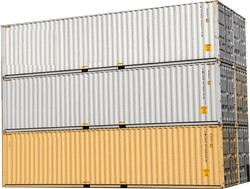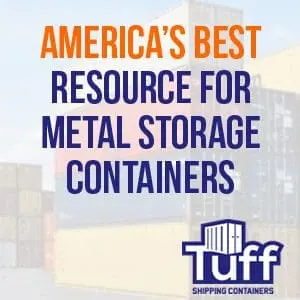
The Legalities of Shipping Container: Navigating Permits and Zoning Regulations
Shipping container homes and businesses have become increasingly popular as an affordable and sustainable alternative to traditional construction methods. However, navigating the legalities of building with shipping containers can be a complex process, involving permits and zoning regulations. In this blog, we will delve into the various aspects of shipping container construction legalities and provide guidance on how to ensure compliance with local laws.
Understanding Zoning Regulations
Before embarking on a shipping container project, it’s essential to understand the zoning regulations in your area. Zoning regulations dictate how the land can be used and are established by local governments to maintain community standards and ensure proper land use.
Residential Zoning
If you plan to build a shipping container home, you need to ensure that your property is zoned for residential use. Local zoning codes may have specific requirements for shipping container homes, such as minimum lot size, building setbacks, or architectural design guidelines. In some cases, you may need to apply for a variance or special permit to build a shipping container home in a residential zone.
Commercial Zoning
For shipping container businesses, such as retail stores or offices, you must ensure that your property is zoned for commercial use. Commercial zoning regulations can be more complex than residential zoning and may require additional permits or approvals, such as site plan reviews or conditional use permits.
Obtaining Building Permits
Once you have determined that your project complies with local zoning regulations, the next step is to obtain the necessary building permits. Building permits are required to ensure that your shipping container structure meets local building codes and safety standards.


Building Code Compliance
Building codes are a set of rules and guidelines that regulate the construction of buildings to ensure safety and structural integrity. When building with shipping containers, you must adhere to your local building code, which may have specific provisions for container construction. This can include requirements for insulation, electrical wiring, plumbing, and structural reinforcement.
Permit Application Process
The process for obtaining a building permit varies by location but typically involves submitting an application, along with detailed plans and specifications of your proposed shipping container structure. You may need to work with a licensed architect, engineer, or contractor to develop these plans and ensure code compliance. After submitting your application, you may need to undergo a plan review and make any necessary revisions before receiving approval and obtaining your permit.
Additional Permits and Approvals
Depending on your project’s complexity and location, you may need additional permits or approvals beyond building and zoning permits. Some examples include:
- Electrical permits for wiring and electrical installations
- Plumbing permits for water supply and sewage connections
- Mechanical permits for heating, ventilation, and air conditioning (HVAC) systems
- Fire safety permits, especially for commercial projects or multi-unit residential buildings
In some cases, you may also need to obtain approval from your local homeowners’ association (HOA) if your shipping container project is within a community governed by an HOA.
Navigating the Legal Landscape
Building with shipping containers can be an exciting and rewarding endeavor, but navigating the legalities can be challenging. To ensure a smooth process and avoid potential legal issues, consider the following tips:
- Research your local zoning and building regulations early in the planning process
- Consult with local building and zoning officials for guidance and clarification
- Work with experienced professionals, such as architects, engineers, and contractors, familiar with shipping container construction and local building codes
- Be prepared for potential delays and additional costs associated with obtaining permits and approvals
- Stay informed about any changes to local regulations that may affect your project
By understanding the legalities of shipping container construction and taking the necessary steps to ensure compliance, you can build a safe, sustainable, and legally compliant shipping container home or business.


Costs of Shipping Containers and Permitting
When planning a shipping container project, it’s essential to factor in the costs of the containers themselves and the permits required for construction. Here, we’ll provide an overview of these costs and how they can impact your project’s budget.
Shipping Container Costs
The cost of shipping containers varies depending on the size, condition, and type of container you choose. On average, you can expect to pay:
- $2,000 to $3,000 for a used 20-foot container
- $3,000 to $5,000 for a used 40-foot container
- $5,000 to $8,000 for a new 20-foot container
- $6,000 to $10,000 for a new 40-foot container
Keep in mind that these are average price ranges, and the actual cost of your shipping container may vary based on factors such as location, availability, and any modifications or customizations you require.
Permit Costs
The cost of obtaining permits for your shipping container project can vary widely depending on your location, the complexity of your project, and the specific permits required. Some general estimates for permit costs include:
- Building permits: $500 to $2,000 or more, depending on the project’s size and scope
- Electrical, plumbing, and mechanical permits: $50 to $500 each, depending on your location and the complexity of the installations
- Zoning variance or special permit fees: $200 to $1,000 or more, depending on the municipality and the specific approval required
In addition to the direct permit costs, you should also consider any indirect costs associated with permitting, such as hiring architects, engineers, or contractors to develop plans, make revisions, or assist with the permit application process.


Budgeting for Your Shipping Container Project
As you plan your shipping container home or business, it’s crucial to develop a realistic budget that accounts for the costs of containers, permitting, and any additional expenses related to construction, such as site preparation, utility connections, and interior finishing. By understanding these costs upfront, you can make informed decisions about the feasibility of your project and avoid potential financial pitfalls along the way.
To create a comprehensive budget for your shipping container project, consider the following steps:
- Research the costs of shipping containers in your area and determine the size and condition that best suits your needs.
- Consult with local building and zoning officials to identify the permits and approvals required for your project, and estimate the associated fees.
- Work with experienced professionals to develop detailed plans and specifications, ensuring code compliance and accurate cost estimates.
- Factor in any additional expenses, such as site preparation, utility connections, and interior finishing, to develop a complete project budget.
By taking the time to understand and plan for the costs associated with shipping container construction, you can set yourself up for success and create a unique, sustainable, and cost-effective home or business.

Leave a Reply